Do you have a question about the Panasonic SC-PT550 and is the answer not in the manual?
Maintain distances between the wireless system and other electronic devices for optimal performance.
Insert batteries correctly and aim at the signal sensor for proper operation.
Guidelines on main unit ventilation, speaker placement, and potential TV picture issues.
Lay down a cloth for assembly and use a Phillips-head screwdriver.
Use appropriate screws and consult professionals for wall mounting.
Instructions for securely attaching speakers to a wall, considering weight support.
Ensure speaker stands meet specific conditions for stability and weight.
Connect surround speaker cables to the wireless system's rear panel.
Connect the wireless system to the household mains socket for power.
Insert the digital transmitter into the slot on the main unit.
Adjust the voltage selector to match your region before connecting the AC mains lead.
Attach speaker-cable stickers and connect speaker wires to the correct terminals.
Connect via SCART for improved picture quality and audio through the home theater.
Use component video terminals for interlaced or progressive output.
Use HDMI for higher quality audio and video with a single cable.
Follow on-screen messages to set menu language, TV type, aspect ratio, and video output.
Details on menu language, TV type, TV aspect, and video output options.
Lists commercial and recorded discs that can be played by the unit.
Identifies incompatible disc types and formats.
Power on the unit, select DVD/CD, load a disc, and adjust volume.
Operate basic playback functions like play, stop, and pause using the remote.
View current playback details like title, chapter, and elapsed time.
Learn how to program play sequences, play randomly, or play all groups.
Instructions for playing WMA, MP3, JPEG, MPEG4, and DivX files.
Navigate submenus, select items, and search for content by title.
Play HighMAT discs, which combine music and image files.
Instructions for playing programs and playlists on RAM and DVD-R/-RW discs.
Play playlists and tracks from CD Text discs, viewing title information.
Access and navigate the main Functions Menu for various settings.
Configure play speed, karaoke, repeat modes, and disc review.
Adjust picture quality, slideshows, and other system settings.
Configure picture transfer mode, aspect ratio, and color space.
Adjust audio settings and customize on-screen display preferences.
View HDMI connection status, audio, color space, and video format.
Configure audio, subtitle languages, and parental control ratings for discs.
Set up advanced disc review modes for enhanced playback.
Adjust TV aspect, type, time delay, and video output settings.
Set up audio modes, speaker delays, and VIERA Link.
Configure HDMI settings for RGB range, video mode, and audio output.
Customize menu language, on-screen messages, and display brightness.
Manage DivX registration and unit re-initialization.
Calibrate speaker delay times for optimal surround sound.
Guidelines for formatting discs and naming folders/files for compatibility.
Advice on handling discs to prevent damage and ensure proper playback.
Steps to register the unit for playing DivX VOD content.
Understand playback limits and potential errors for DivX VOD content.
Tune to radio stations manually or use automatic presetting.
Utilize RDS information and manage preset radio channels.
Enhance dialogue clarity and adjust bass levels.
Apply surround effects and adjust sound quality with EQ settings.
Improve stereo sound with Super Surround or Dolby Pro Logic II.
Use a test signal to automatically adjust speaker output levels.
Connect a microphone and set up karaoke using on-screen menus.
Use USB sources for karaoke, adjust mic volume and echo.
Block vocals or adjust song pitch for karaoke.
Choose vocal modes for karaoke discs and other audio sources.
Connect an outdoor FM antenna for improved radio reception.
Connect set-top boxes, VCRs, and televisions for audio/video input.
Connect external audio devices to the Music Port for playback.
Connect USB mass storage devices for playing music and view files.
Learn about linked operations between Panasonic devices.
Enable simplified control and automatic source selection.
Operate home theater menus using the TV remote.
Use the remote control to operate a Panasonic television.
Decode surround signals from external audio/video sources.
Switch between REMOTE 1 and REMOTE 2 modes.
Troubleshoot power-related problems and unresponsive functions.
Address problems with disc playback, menus, and specific operations.
Resolve issues related to picture display, distortion, or absence of image.
Troubleshoot distorted sound, humming, no sound, or radio reception issues.
Understand error codes and indicators on the unit's display.
Troubleshoot USB device compatibility and slow operation.
Power output, impedance, and frequency response for different models.
Details FM reception capabilities and terminal types.
Lists supported file types for USB playback.
Details video system, output levels, and terminal types.
Technical details for speakers including input power and frequency range.
Covers power supply, consumption, and wireless module specs.
Includes power supply, consumption, dimensions, mass, and operating conditions.
Instructions for cleaning, disc tray handling, and safety precautions.
Maintain distances between the wireless system and other electronic devices for optimal performance.
Insert batteries correctly and aim at the signal sensor for proper operation.
Guidelines on main unit ventilation, speaker placement, and potential TV picture issues.
Lay down a cloth for assembly and use a Phillips-head screwdriver.
Use appropriate screws and consult professionals for wall mounting.
Instructions for securely attaching speakers to a wall, considering weight support.
Ensure speaker stands meet specific conditions for stability and weight.
Connect surround speaker cables to the wireless system's rear panel.
Connect the wireless system to the household mains socket for power.
Insert the digital transmitter into the slot on the main unit.
Adjust the voltage selector to match your region before connecting the AC mains lead.
Attach speaker-cable stickers and connect speaker wires to the correct terminals.
Connect via SCART for improved picture quality and audio through the home theater.
Use component video terminals for interlaced or progressive output.
Use HDMI for higher quality audio and video with a single cable.
Follow on-screen messages to set menu language, TV type, aspect ratio, and video output.
Details on menu language, TV type, TV aspect, and video output options.
Lists commercial and recorded discs that can be played by the unit.
Identifies incompatible disc types and formats.
Power on the unit, select DVD/CD, load a disc, and adjust volume.
Operate basic playback functions like play, stop, and pause using the remote.
View current playback details like title, chapter, and elapsed time.
Learn how to program play sequences, play randomly, or play all groups.
Instructions for playing WMA, MP3, JPEG, MPEG4, and DivX files.
Navigate submenus, select items, and search for content by title.
Play HighMAT discs, which combine music and image files.
Instructions for playing programs and playlists on RAM and DVD-R/-RW discs.
Play playlists and tracks from CD Text discs, viewing title information.
Access and navigate the main Functions Menu for various settings.
Configure play speed, karaoke, repeat modes, and disc review.
Adjust picture quality, slideshows, and other system settings.
Configure picture transfer mode, aspect ratio, and color space.
Adjust audio settings and customize on-screen display preferences.
View HDMI connection status, audio, color space, and video format.
Configure audio, subtitle languages, and parental control ratings for discs.
Set up advanced disc review modes for enhanced playback.
Adjust TV aspect, type, time delay, and video output settings.
Set up audio modes, speaker delays, and VIERA Link.
Configure HDMI settings for RGB range, video mode, and audio output.
Customize menu language, on-screen messages, and display brightness.
Manage DivX registration and unit re-initialization.
Calibrate speaker delay times for optimal surround sound.
Guidelines for formatting discs and naming folders/files for compatibility.
Advice on handling discs to prevent damage and ensure proper playback.
Steps to register the unit for playing DivX VOD content.
Understand playback limits and potential errors for DivX VOD content.
Tune to radio stations manually or use automatic presetting.
Utilize RDS information and manage preset radio channels.
Enhance dialogue clarity and adjust bass levels.
Apply surround effects and adjust sound quality with EQ settings.
Improve stereo sound with Super Surround or Dolby Pro Logic II.
Use a test signal to automatically adjust speaker output levels.
Connect a microphone and set up karaoke using on-screen menus.
Use USB sources for karaoke, adjust mic volume and echo.
Block vocals or adjust song pitch for karaoke.
Choose vocal modes for karaoke discs and other audio sources.
Connect an outdoor FM antenna for improved radio reception.
Connect set-top boxes, VCRs, and televisions for audio/video input.
Connect external audio devices to the Music Port for playback.
Connect USB mass storage devices for playing music and view files.
Learn about linked operations between Panasonic devices.
Enable simplified control and automatic source selection.
Operate home theater menus using the TV remote.
Use the remote control to operate a Panasonic television.
Decode surround signals from external audio/video sources.
Switch between REMOTE 1 and REMOTE 2 modes.
Troubleshoot power-related problems and unresponsive functions.
Address problems with disc playback, menus, and specific operations.
Resolve issues related to picture display, distortion, or absence of image.
Troubleshoot distorted sound, humming, no sound, or radio reception issues.
Understand error codes and indicators on the unit's display.
Troubleshoot USB device compatibility and slow operation.
Power output, impedance, and frequency response for different models.
Details FM reception capabilities and terminal types.
Lists supported file types for USB playback.
Details video system, output levels, and terminal types.
Technical details for speakers including input power and frequency range.
Covers power supply, consumption, and wireless module specs.
Includes power supply, consumption, dimensions, mass, and operating conditions.
Instructions for cleaning, disc tray handling, and safety precautions.
| Brand | Panasonic |
|---|---|
| Model | SC-PT550 |
| Category | Home Theater System |
| Language | English |
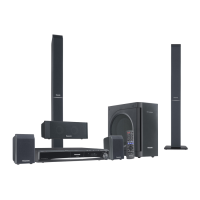

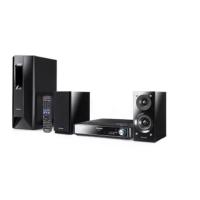
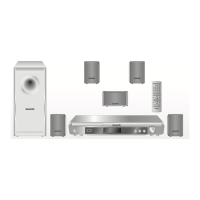
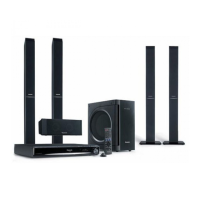
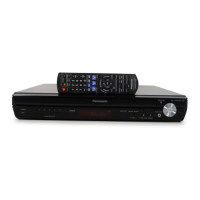

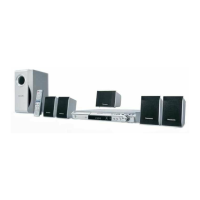
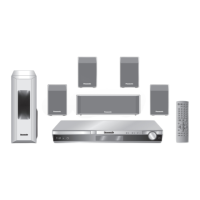
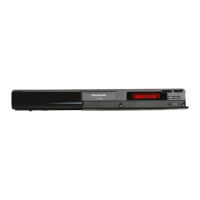
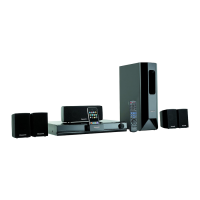
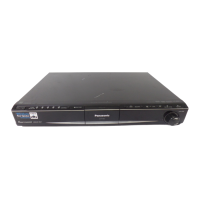
